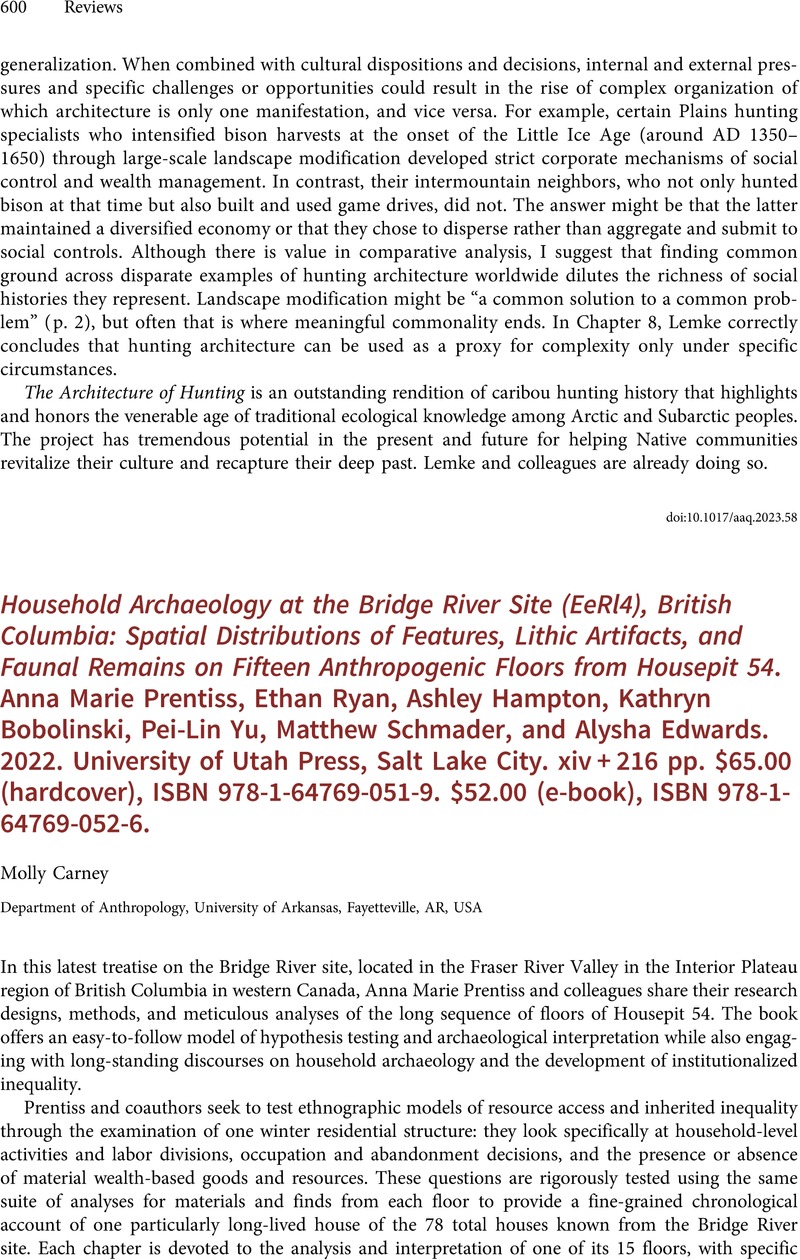No CrossRef data available.
Article contents
Household Archaeology at the Bridge River Site (EeRl4), British Columbia: Spatial Distributions of Features, Lithic Artifacts, and Faunal Remains on Fifteen Anthropogenic Floors from Housepit 54. Anna Marie Prentiss, Ethan Ryan, Ashley Hampton, Kathryn Bobolinski, Pei-Lin Yu, Matthew Schmader, and Alysha Edwards. 2022. University of Utah Press, Salt Lake City. xiv + 216 pp. $65.00 (hardcover), ISBN 978-1-64769-051-9. $52.00 (e-book), ISBN 978-1-64769-052-6.
Review products
Household Archaeology at the Bridge River Site (EeRl4), British Columbia: Spatial Distributions of Features, Lithic Artifacts, and Faunal Remains on Fifteen Anthropogenic Floors from Housepit 54. Anna Marie Prentiss, Ethan Ryan, Ashley Hampton, Kathryn Bobolinski, Pei-Lin Yu, Matthew Schmader, and Alysha Edwards. 2022. University of Utah Press, Salt Lake City. xiv + 216 pp. $65.00 (hardcover), ISBN 978-1-64769-051-9. $52.00 (e-book), ISBN 978-1-64769-052-6.
Published online by Cambridge University Press: 31 August 2023
Abstract
An abstract is not available for this content so a preview has been provided. Please use the Get access link above for information on how to access this content.

- Type
- Review
- Information
- Copyright
- Copyright © The Author(s), 2023. Published by Cambridge University Press on behalf of the Society for American Archaeology


